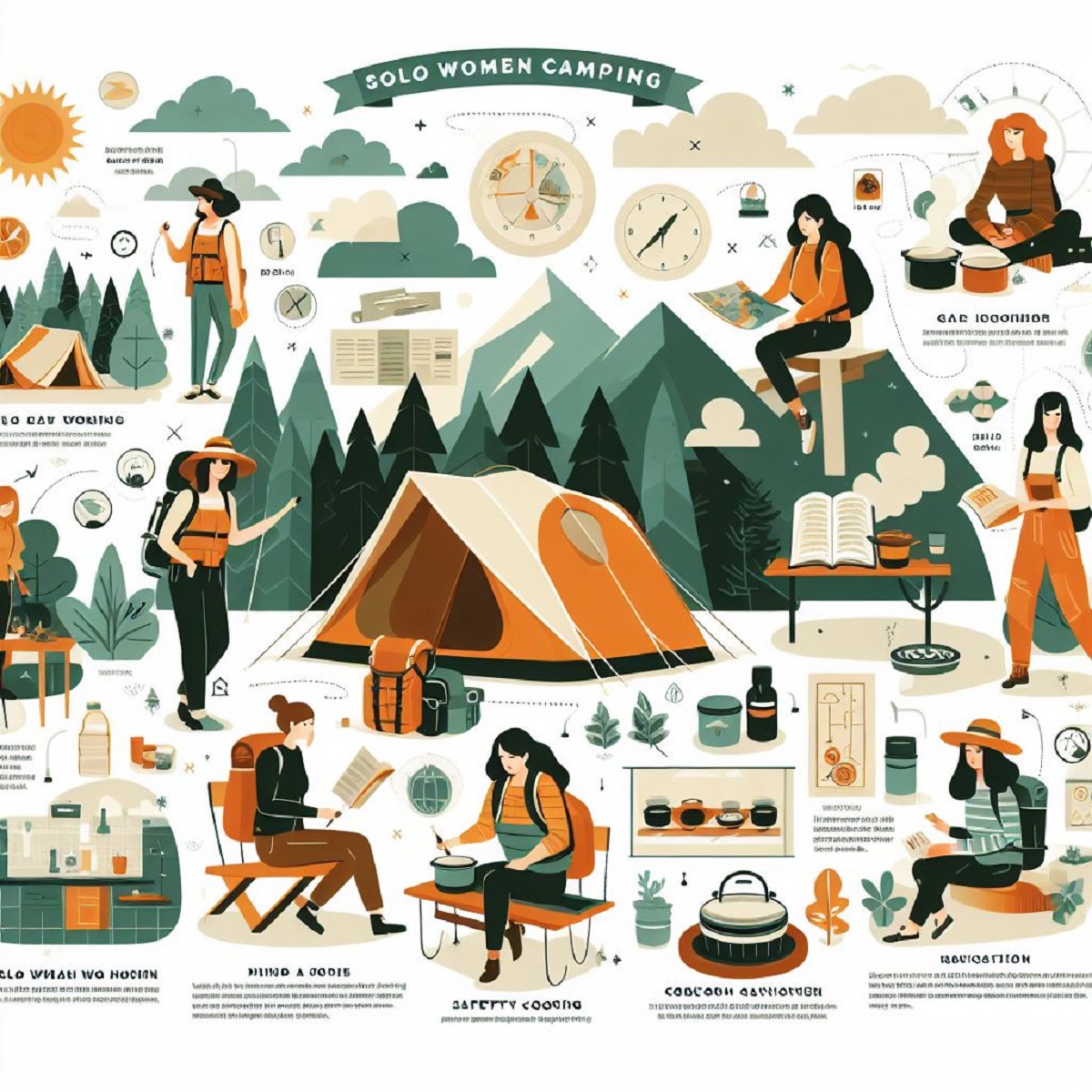Embarking on a solo camping adventure can be exhilarating, but it’s essential to prioritize safety and preparedness, especially for solo female travelers. Drawing from the wisdom of seasoned adventurers, here are practical tips to ensure a safe and enjoyable experience in the great outdoors.
Key Takeaways:
- Preparedness is Key: Equip yourself with essential safety gear, including pepper spray, a multi-tool, and a first aid kit. Plan your campsite strategically and trust your instincts to ensure a secure camping experience.
- Communication and Check-Ins: Share your itinerary with trusted contacts and check in regularly to keep them informed of your whereabouts. Establishing clear communication channels enhances safety and provides peace of mind for both you and your loved ones.
- Strategic Campsite Selection: Choose campsites frequented by experienced outdoor enthusiasts and families, as they often provide a sense of community and added security. Trust your intuition when assessing the safety of your surroundings.
- Stay Vigilant: Trust your instincts and remain vigilant of your surroundings. Be prepared to adapt and make quick decisions in unfamiliar situations to ensure your safety and well-being.
Practical Tips for Solo Camping Safety:
1. Campsite Preparation:
- Arrive at your campsite before dark whenever possible to familiarize yourself with your surroundings. Conduct a walk-around to assess the area and identify potential exit routes.
- Park your car strategically for a quick getaway if needed. Keep keys accessible and maintain a clear path for a swift departure in case of emergencies.
2. Personal Safety Measures:
- Carry pepper spray or bear spray for protection against wildlife and potential threats. Keep it within reach and practice using it beforehand for familiarity.
- Consider sleeping in your car for added security, ensuring the driver’s seat remains clear for a quick escape if necessary.
3. Communication Protocol:
- Share your location and itinerary with trusted individuals, providing regular updates on your whereabouts. Establish a check-in schedule to maintain communication throughout your trip.
- Prepare a plausible story about your camping trip to share with others, minimizing the risk of revealing that you are camping alone.
4. Vigilance and Awareness:
- Trust your instincts and be cautious of your surroundings. If something feels off or sketchy, trust your gut and consider relocating to a safer location.
- Stay informed by reading campsite reviews and assessing the atmosphere of your surroundings. Choose campsites with positive reviews and a welcoming community vibe for added security.
Insights from Experienced Solo Campers:
- Strategic Campsite Selection: Opt for campsites near families or experienced hikers for added security and a sense of community.
- Maintain a Plausible Story: Prepare a detailed narrative about your camping trip to share with others, minimizing the risk of drawing attention to your solo status.
- Stay Alert: Remain vigilant and trust your instincts, prioritizing personal safety above all else.
Conclusion:
Solo camping offers unparalleled opportunities for adventure and self-discovery, but safety should always remain a top priority. By following these practical tips and drawing from the experiences of seasoned solo campers, you can embark on your outdoor journey with confidence and peace of mind. Remember, with careful preparation and vigilance, solo camping can be a rewarding and empowering experience amidst the beauty of nature.















